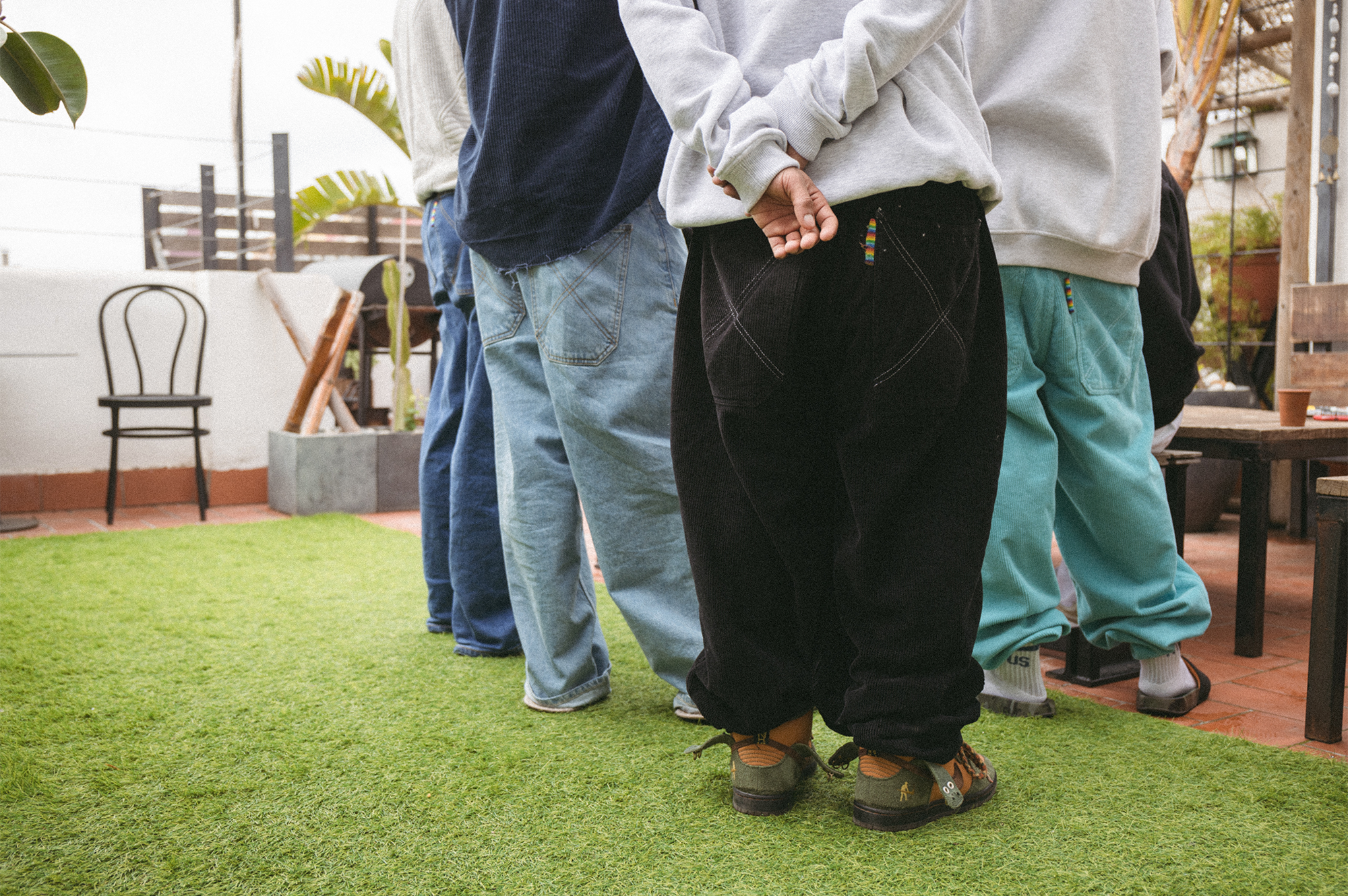
Pick any country and look carefully enough through its history, and you’ll find some imprint from skateboarding. Whether it’s Soviet-era Russians building their own boards, or Norwegians banning skateboarding for an entire decade, you’ll always come across some odd surprise. If you look at Germany, for instance, you might find some early origins of a skateboarder favorite: baggy jeans.
In the late ‘80s, desperate for a way to make a name for himself, Jürgen Wolf launched his own clothing brand, Homeboy Loud Couture. He sponsored skaters—like the old Santa Cruz pro, Claus Grabke—and rappers—Cypress Hill, M.O.P., and the Wu-Tang Clan—and in the early ‘90s, after a chance encounter in Hollywood, he started making the kind of baggy pants that would become a staple for skateboarders.
Today, Jürgen and his son Julian run Homeboy from Germany, where they keep their baggy dreams alive. We talked with them about the differences of running a company in the pre-internet age versus today, partying with wild American celebrities, and the secret to finding the right amount of baggy.

A lot of people say they invented the baggy pants. In your mind, which company made the first skate-specific baggy pants? Homeboy? Blind? New Deal?
Jürgen: I don’t think Blind or New Deal were around in the early days with their baggy pants. The only brand I know of is Fresh Jive. I remember they were the only ones with baggy pants at the Action Sports Retailer Show at the time. No other brand. The others all started much later.
You guys originally started in the late ’80s. How did that come about?
Jürgen: In ’87 I was distributing Airwalk in parts of Europe. Airwalk was just six months old at that time. They made nice shoes but not the best clothing. I needed more clothing stuff to sell and somebody said there was a new brand, Stüssy, so I got in touch with them. I was the only guy from Europe asking for distribution, and the manager said I could do it, so I flew to California. Their stuff was nice but I didn’t like their silk shirts. Stüssy said, “If you don’t understand our silk shirts, you don’t understand Stüssy, so you’re out. You will not become our distributor.”
I went to the beach and said, “Fuck, I flew over here for nothing.” I started thinking, “When I fly home, what will I tell my people?” I was super angry so I said fuck it, I’ll do a brand by myself.
At that time, I was listening to hip-hop, and they always said the word, “homeboy.” I made a few Homeboy designs, went to a printer in Frankfurt, and told my sales reps, “This is our new brand. They are from New York, and they’re into skating and hip-hop.”
Later I went to a T-shirt supplier in North Carolina, and while I was there I saw these football coach jackets. I asked him to print my logo on 100 jackets, but when I showed them to the dealers in Germany they said they were ugly. I told them to take ten and try them, and a week later they were sold out. So out of a pure, stupid accident, I had coach jackets years before Thrasher and all of these guys did it. I had a big logo on the back, and because in our part of Europe you wear a jacket eight months a year, there are thousands of people walking around wearing the jacket, it became the biggest marketing thing for us. Like living billboards.
Six months later I told my sales reps I made up the story of Homeboy, and they said, “Fuck you!” One older guy asked everyone if the sales [of the brand] were good. They said yes so he said, “Shut up, don’t tell the true story of Homeboy to anybody.” There was no internet back then, so nobody could check on our story [laughs].
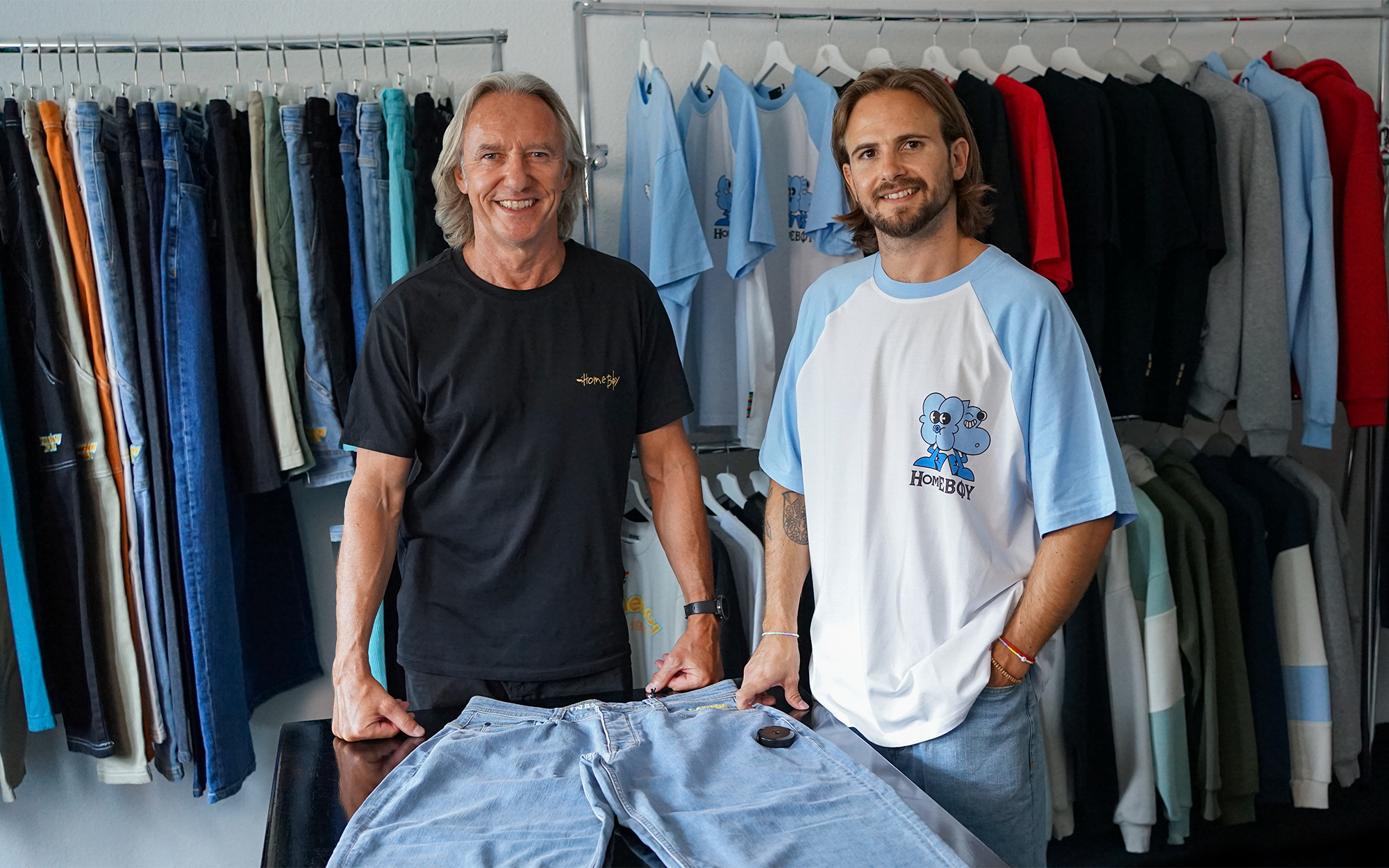
Do you ever feel like you’re stealing the word “homeboy” from Hip Hop culture in the U.S. where it originated?
Jürgen: I didn’t have any clue what was going on behind that word at that time. I would not say it’s stealing, I just was young and naïve. There was no Google around to check it out. I asked some guys in LA what homeboy meant and they said, “It’s like ‘friend.” I said, “OK, ‘friend’ is cool and could bring different cultures together.”
What would you say to people that think reviving Homeboy in 2016 is just a cash-grab to capitalize on the latest resurgence of baggy style?
Jürgen: I’d say I’d be lucky if I ever got back all the money I’ve put into pants since 2016. Until two years ago, everyone in the market laughed at us. For years there was this joke among the reps, “Hi, do you know? Baggy pants are coming back!” So many people kept telling me, “Baggy pants will never come back. Forget that dorky idea!” Now, my friend told me, “They haven’t made that joke in 12 months. Everyone has caught on to it now.” Their mouths are shut. Now I’m glad we’ve been promoting baggy pants for seven years. And if my son and I are now reaping the harvest of this seed, no one should hold it against us.
How do you feel about what fashion brands are doing to copy skating and streetwear?
Jürgen: I hate the streetwear stuff Dior and Gucci are doing. Lucien Clarke is wearing a Louis Vuitton shoe for, I don’t know, what $500 or more? And all the skaters say, “Yeah!” Are they crazy? Normally a skater has no money. What skater is able to buy a $500 or $1,000 Louis Vuitton shoe? I just don´t get it.
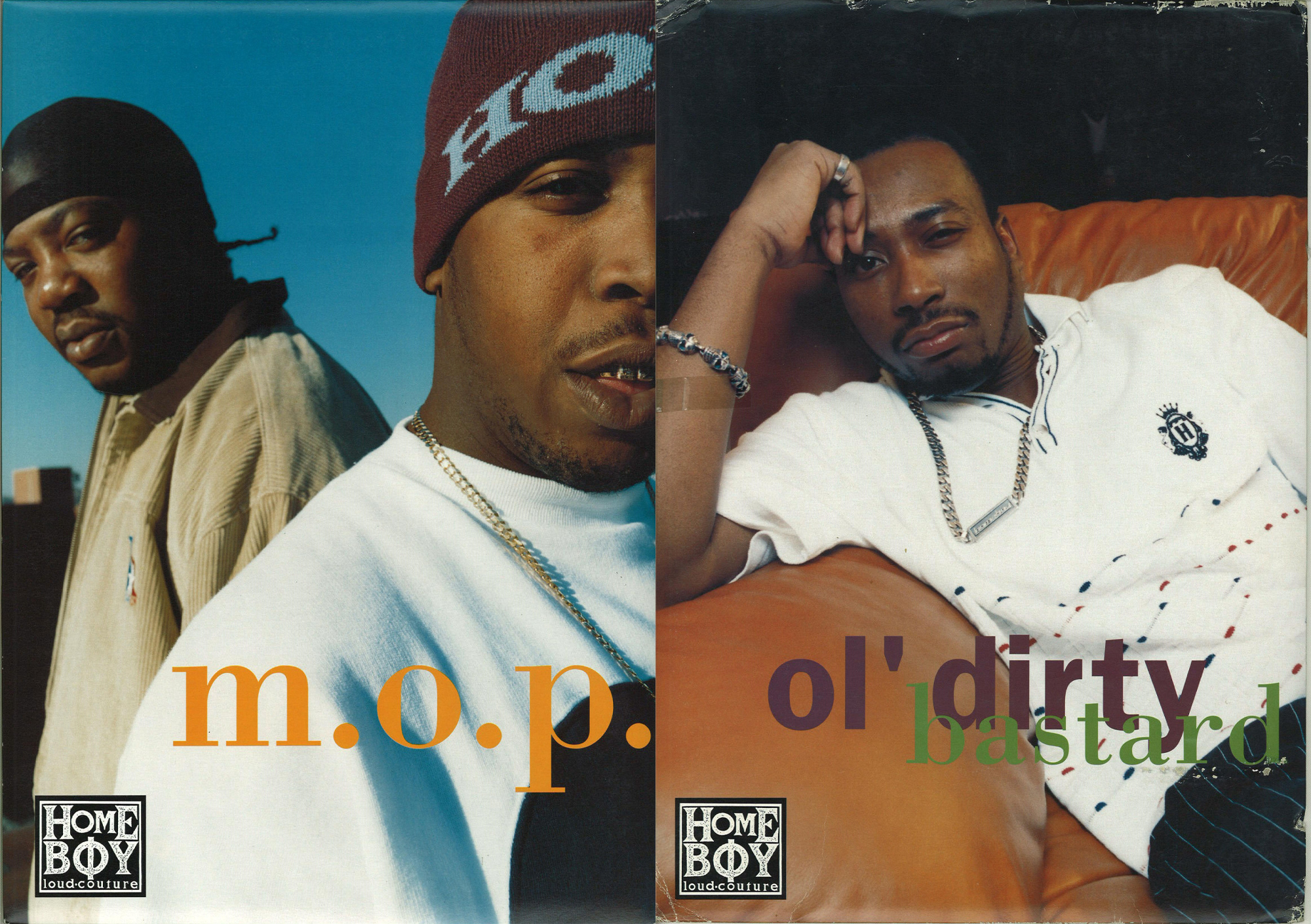
You guys had a bunch of famous rappers in your ads, like Cypress Hill, Old Dirty Bastard, and M.O.P… How did you get in contact with them?
Jürgen: I met a girl in Los Angeles who knew everybody. She lived in a house in the Hollywood Hills that Bette Davis built back in the day, and on her birthday we jumped ass first into her swimming pool—it was an ass-bomb contest, we call it here—together with the guys from Blink 182. And then somehow we met the guys from Wu-Tang Clan and Cypress Hill. It was lucky.
Did either of you meet Ol’ Dirty Bastard?
Jürgen: Yeah, in New York, when we had that photo shoot.
What was he like?
Jürgen: I forgot, but it was cool.
Julian: There was this dude, he played with Michael Jordan…
Jürgen: Dennis Rodman! We went to a party with Rodman, fucking shit I was laughing the whole evening. Rodman was crazy. Every five seconds he had another idea. Management would open the door and he’d say, “I need more girls.” Later the doors would open and the management brought in girls, five for everybody. Then he wanted to watch something on TV, so 30 minutes later they brought up a huge TV. Five minutes later he said no he doesn’t want that, he wants super ice-cold Red Bull. So I think we got 500 cans of Red Bull.
It was like diving into a Hollywood movie with crazy idiots. I was living in Frankfurt at the time, so it was like flying over for a weekend of partying, then you fly home and sleep for two weeks. But no drugs. I never did drugs.
Why don’t you take drugs?
Jürgen: When I was 17 or 18 I went to a few concerts in Frankfurt and smoked weed, and I ended up sitting outside on the staircase freaking out. It´s not my thing.
Julian: In the industry, everyone thinks he’s doing coke every day. He doesn’t need drugs to get hyped.
What about you Julian, do you smoke weed?
Julian: I’m kind of the same. I have bad experiences with weed as well. The worst thing I do is when I drink, I smoke cigarettes. But it´s different with our skate team. Everywhere we go, before we rent Airbnbs, we have to arrange weed [laughs].
When you started, where did the idea for baggy jeans come from?
Jürgen: As I said, I was distributing Airwalk and Town & Country, and their biggest market was California. I said I needed pants, but they mostly had shorts, so I decided to ask a company from Turkey to construct skate jeans for us, but they were not able to make a good fit. All of our prototypes turned out ugly and didn’t perform well. You couldn’t even sit in them.
Then I met a guy on Melrose Avenue in Los Angeles wearing huge pants. He said they were, “wide for more radical movements!” He told me he sewed them himself. They looked ugly but I thought if we are not able to make fitting jeans maybe we are able to do that. He said they were a baggy fit and my English was so bad I just said baggy fit, OK, that is a baggy pant.
Do you guys think there’s a secret to making baggy pants that look good?
Julian: We’re not talking about that [laughs].
Jürgen: It’s like Coca-Cola, you know?
Julian: It’s the secret formula [laughs]. I think one of our many secrets was to listen to all the opinions about baggy pants, even from those who think baggies are silly. We listen to our skate team, especially Daniel Ledermann, Wanja Bach and company. Also, some non-skating girls who are pushing the silhouette changes further and further.
Jürgen: We both tried a hundred prototypes, changing a little bit here and a little bit there. Then my daughter tried on the pants and liked them. We thought they were just for men, but we took her advice, and now we sell 35–40% to girls.
Julian: When we did the Monster Baggy jeans, which is our baggiest shape, we said to stay ahead of the trend, let’s just do something super silly. We made them stupidly big and now it’s about to become our new top seller, thanks to our skate team and the bolder part of society, girls. It’s not about joking, like having a laugh about silly pants, it’s about trying to push it forward without being ridiculous.
Jürgen: And with the experience from the ’90s, we checked a lot of factories. We flew over to China, Hong Kong, and Bangladesh and tried to develop jeans with them, but the best quality we found is in Turkey. You can make jeans in Bangladesh and not give a shit about fair production, or you can go to Turkey, pay a little bit more, and you get an excellent piece of work that is not that harmful to our planet. And we’re sure there are no kids working at our factories.
Some brands’ pants cost $120 with production in China. Our pants start at $87. We decided to go for an affordable price because if I had a teenager I would not give them $120 for a pair of skate jeans.
A lot of skaters have complained about paying $120 for jeans.
Jürgen: For me the example is Ford. They sell a lot of F-150 trucks to farmers and workers. Skaters need a pair of pants for skating, like a shoe, that they can really wear down. Let’s say I’m the new CEO of Ford and I think we do such a great marketing job and we are much cooler, and I raise the price of an F-150 from $40,000 to $75,000. My customer base wouldn’t necessarily change from farmers to posers. You can do that with a nice Versace dress, but not for skate jeans.
If someone wanted to start a pant company today, how much money would they need to have?
Julian: It’s always a matter of price. If you don’t mind selling a pant for $300 to customers, it’s easy to make. At low quantities the factory might charge you $50 a pant to make. But if you want to sell a pant to people at a reasonable price that young skaters can afford, you’d probably have to produce at least 400 units in one color. If you want to have a reasonable price, you need to be making a large quantity. Or you put in a lot of work and you make them all yourself, which a lot of people are doing.
What’s to stop some from brands from buying Homeboy jeans and sending it to a manufacturer and making their own copy?
Julian: That’s the problem, nothing is stopping them from that. That’s actually a problem we had already. There was one brand that is pretty big here and we were working together with them, and then one season later they had the exact same pair of jeans. In the end, it’s not only the color and the silhouette of the clothes, it’s the soul as well. It’s the marketing that we’ve created, and the marketing is the soul of a brand. So you can of course go out there and copy our pants, but you can’t copy the soul.
Polar pants seem to be everywhere in the USA these days. Do you have beef with Polar for tapping into the US market so well?
Jürgen: Oh no! Absolutely not. I don´t think like that. I do international sales and I don´t know anybody in the US skate business anymore. I wouldn’t even know how to find a US distributor, to be honest.
You’re trying to get Homeboy in the US, correct? What are some challenges and how are you guys going about it?
Julian: The biggest challenge for us is we have no one in the US representing us. We don’t have riders yet and I think the biggest challenge is having someone in the US who knows what we are doing and represents us to their own market. America is used to creating the brands and exporting them, they have to get used to importing them. But globally, I think Europe is getting a bigger spot in the scene. We also have skaters like Daniel Ledermann and Wanja Bach, even though we are based in Germany, they’re enabling us to build the future of the scene.
So you’re saying that Homeboy is open for US submissions?
Yeah, definitely. We’re super keen.
Is it easier to get laid wearing pants that are more likely to fall off on their own?
Jürgen: It’s definitely easier to have sex when you’re wearing baggy pants. Skinny wearers have less sex. [laughs]
How worried are you about skinny jeans eventually coming back?
Julian: I think the longer a trend takes to develop into the mainstream, the longer it will stay. People slowly get used to something and then they think it’s a regular thing and then they have problems with giving up on that. That’s why it’s taking so long to get rid of skinny jeans because they sunk into society so slowly. Now people who are 60 or older are wearing skinny jeans. Skinny pants are still 95% of all society’s go-to pants, so I’m not worrying about when skinnies are coming back.
It works the same way with baggy pants. We are working on our baggies for six years now and it started bearing fruit maybe two years ago. Building up a trend over the period of more than four years is a long time in our rapidly changing society and therefore a very good basis for the future. We are still a long way from hitting the mainstream. So I think when folks over 60 are keen to wear skate baggies, then you know the skinnies will return.
Have you ever thought of making a line of skinny jeans?
Jürgen: I have never sold a pair of skinny jeans in my life and will not. I am 62 and have been wearing our baggy chinos in black for years.
All my friends, who are also old, wear skinny jeans and hang their bellies over their belts. Looks like crap. I, unfortunately, don’t have a belly to put over the waistband either. [laughs]
Comments
Popular
-
 RECONTEXTUALIZING ZAK ANDERS, ONE OF TODAY’S MOST MYSTIFYING SKATERS
RECONTEXTUALIZING ZAK ANDERS, ONE OF TODAY’S MOST MYSTIFYING SKATERS
"I don’t want to be this brutal punk that hates everything that people like, and I’m trying really hard to undo that."
-
 RARELY SEEN PHOTOS FROM READ AND DESTROY, THE BELOVED BRITISH SKATE MAG
RARELY SEEN PHOTOS FROM READ AND DESTROY, THE BELOVED BRITISH SKATE MAG
Check out early documentation of London's Southbank, vert ramps tucked into Lord of the Rings-level forests, and everything in between.
-
 NAVIGATING SKATING’S HIGHS AND LOWS WITH MATT MILITANO
NAVIGATING SKATING’S HIGHS AND LOWS WITH MATT MILITANO
Over coffee and cigarettes Matt talks prank shows, ABDs and his love for the VX.
-
 A CHAT WITH LUDVIG HAKANSSON, THE OLDEST SOUL IN SKATEBOARDING
A CHAT WITH LUDVIG HAKANSSON, THE OLDEST SOUL IN SKATEBOARDING
The man loves to read Nietzche, skates in some expensive vintage gear, and paints in his own neoclassical-meets-abstract-expressionist style.
-
 MEET THE SEATTLE ARTIST WHO DESIGNED A BACON ’N EGGS INSPIRED SKATEPARK
MEET THE SEATTLE ARTIST WHO DESIGNED A BACON ’N EGGS INSPIRED SKATEPARK
Breakfast-obsessed skaters rejoice!

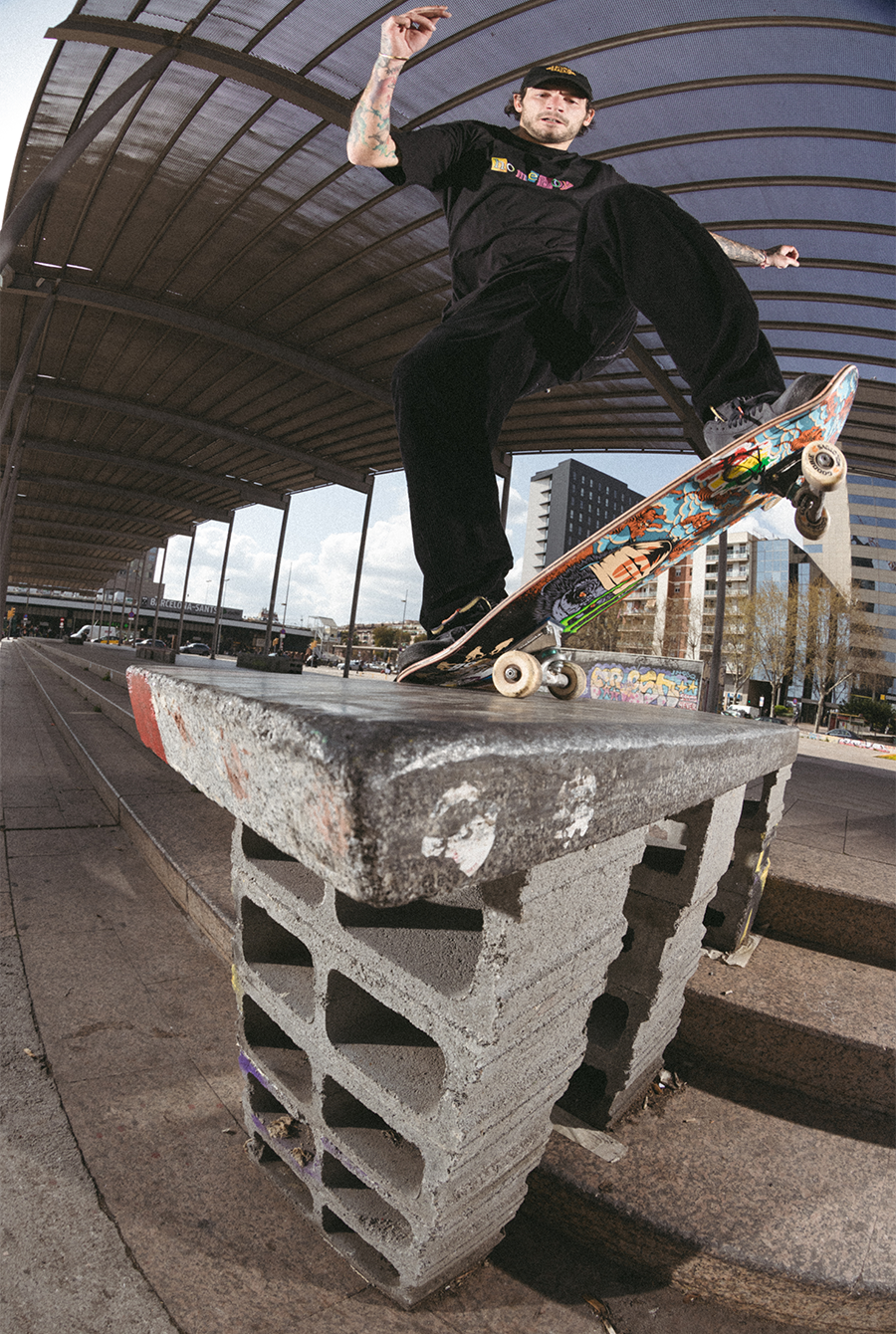
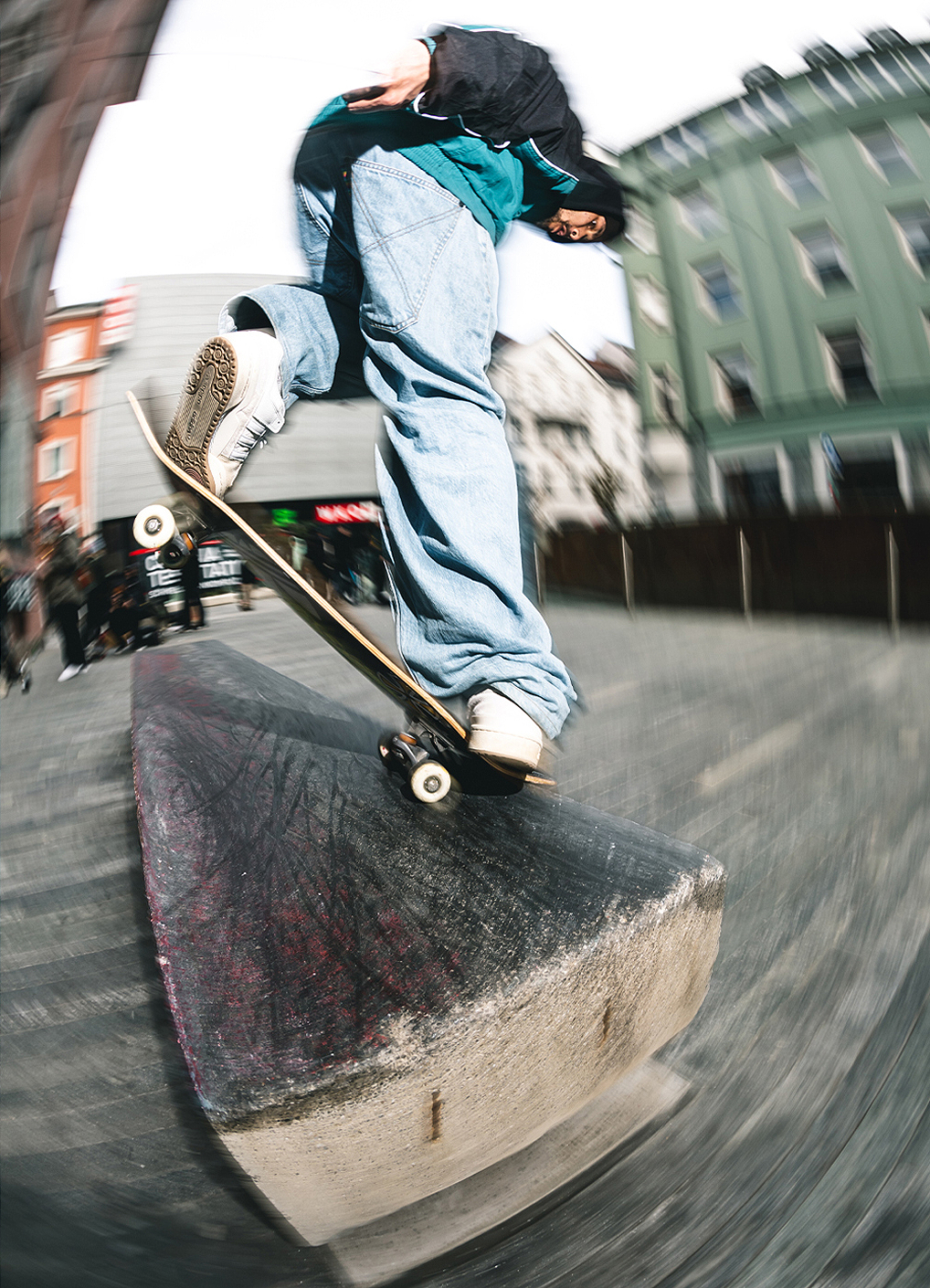
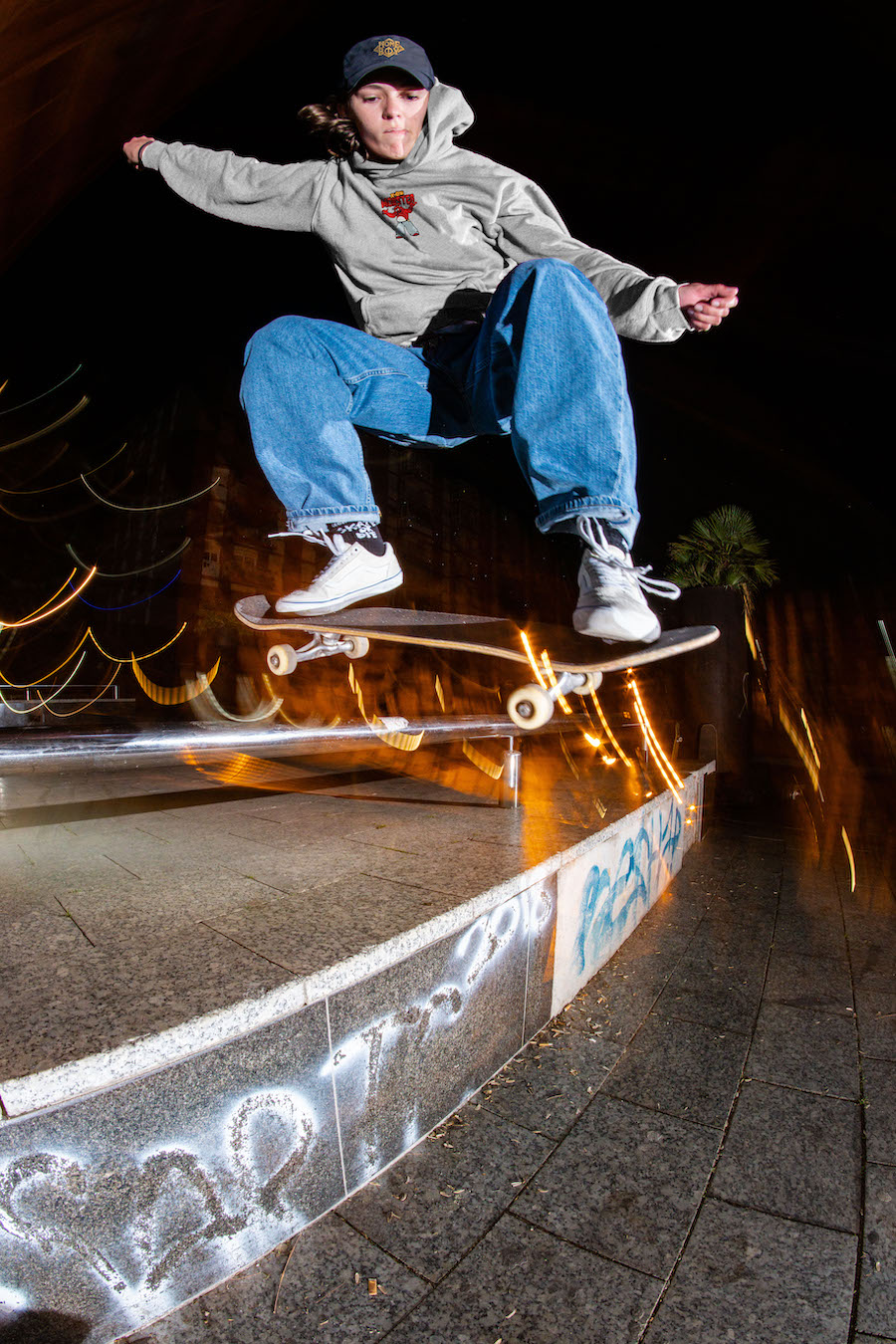
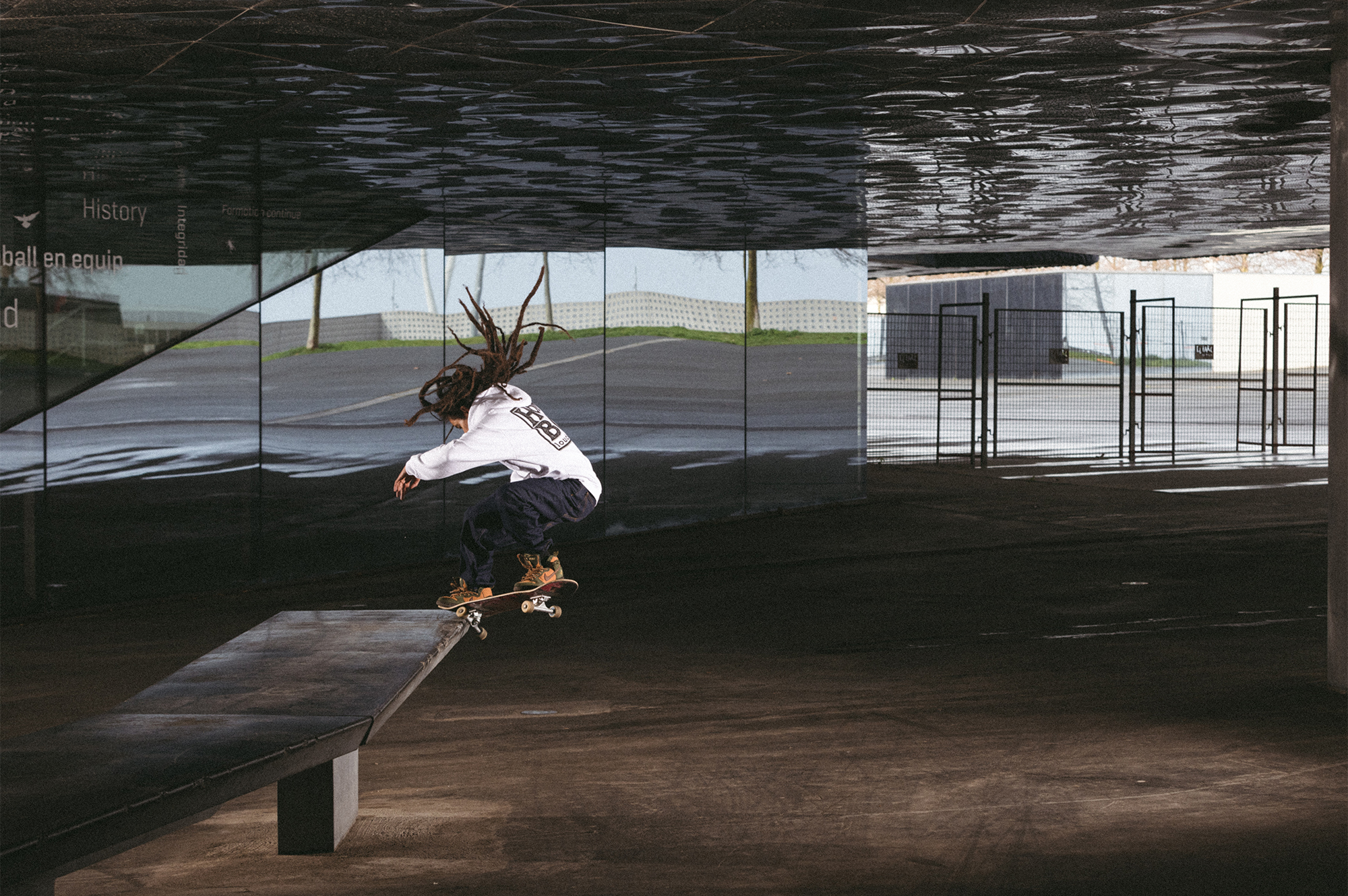
August 5, 2022 8:15 pm
I enjoyed this read.
Couple good laughs.
Cheers!
Keep up the great work.
Love from Canada
August 7, 2022 5:02 pm
Never heard of em till now.
Curious if / who would ride for us team
August 8, 2022 9:37 am
“when folks over 60 are keen to wear skate baggies, then you know the skinnies will return.”
“I am 62 and have been wearing our baggy chinos in black for years.”
Contradiction?
August 8, 2022 1:56 pm
No. He meant when baggy jeans are massively used by folks over 60…
August 8, 2022 1:47 pm
Where do i cop these in america?
August 9, 2022 4:54 am
Hi James, hopefully soon at your local skate shop. Give these guys a hint and show them the article. ;)